Single Phase Pad Mounted Transformer: Essential Components in Residential Power Distribution?
Have you ever wondered how electricity safely reaches your home? The answer lies in a device you’ve probably walked past countless times without noticing – the single phase pad mounted transformer.
Single phase pad mounted transformers are crucial components in residential power distribution. They convert high voltage electricity from utility lines to lower, safer voltages for household use. These compact, efficient devices ensure reliable power supply to homes while maintaining safety and aesthetics in residential areas.
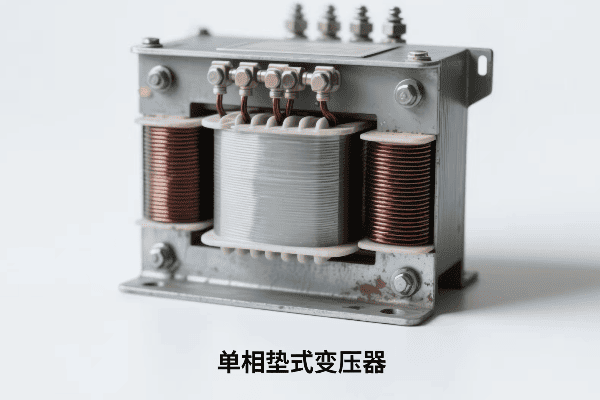
Let’s explore the world of these unsung heroes of our electrical infrastructure and understand why they’re so important for powering our homes.
The Role and Functionality of Single Phase Pad Mounted Transformers in Residential Electricity Distribution?
Ever noticed those green boxes in your neighborhood and wondered what they do? They’re not just for decoration – they play a vital role in bringing power to your home.
Single phase pad mounted transformers step down high voltage electricity (typically 7.2kV to 14.4kV) to standard residential voltages (120/240V). They serve as the final link between the utility’s distribution system and individual homes, providing safe and efficient power delivery for residential areas.
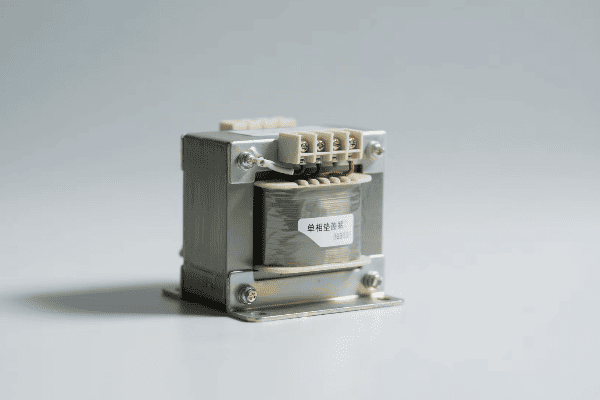
Key Functions of Single Phase Pad Mounted Transformers
-
Voltage Transformation
- Steps down high voltage to usable household levels
- Typically converts 7.2kV-14.4kV to 120/240V
-
Power Distribution
- Serves multiple homes from a single unit
- Typically powers 5-15 residences
-
Electrical Isolation
- Separates utility high voltage from residential low voltage
- Provides safety barrier between distribution and end-user
-
Load Management
- Balances power demand across connected homes
- Handles varying load conditions throughout the day
-
Protection
- Includes fuses and other protective devices
- Safeguards against overloads and short circuits
| Function | Input | Output | Benefit |
|---|---|---|---|
| Voltage Transformation | 7.2kV-14.4kV | 120/240V | Safe household voltage |
| Power Distribution | Single feed | 5-15 homes | Efficient power delivery |
| Electrical Isolation | High voltage | Low voltage | Enhanced safety |
| Load Management | Varying demands | Balanced supply | Stable power for all users |
| Protection | Potential faults | Safe operation | Prevents system damage |
In my years of experience with residential power systems, I’ve seen firsthand how crucial these transformers are. I remember a project in a new suburban development where we were installing the electrical infrastructure. The single phase pad mounted transformers were the linchpin of the entire system.
We carefully placed these transformers at strategic points throughout the neighborhood. Each unit was sized to serve about 10 homes, taking into account the expected power usage patterns of modern families. It was fascinating to see how a single, compact device could efficiently power multiple households.
One particular challenge we faced was balancing the loads across different transformers. Homes today use electricity in very different ways – some have solar panels, others have electric vehicle chargers, and many have smart home systems. We had to design the system to handle these varying demands while ensuring each transformer wasn’t overloaded.
I recall an instance where a homeowner was concerned about the transformer being placed near their property. We explained how these modern pad mounted units are designed to be safe and unobtrusive. Unlike the old pole-mounted transformers, these units are silent, emit minimal electromagnetic fields, and are aesthetically pleasing. The homeowner was relieved and even impressed by the technology.
Another interesting aspect of these transformers is their role in power quality. In one neighborhood, we had issues with voltage fluctuations due to the high number of air conditioners being used during summer. By adjusting the tap settings on the pad mounted transformers, we were able to stabilize the voltage and improve the overall power quality for all residents.
The protection features of these transformers have also proven their worth many times. During a severe thunderstorm, one of the transformers detected a surge and automatically disconnected, protecting the connected homes from potential damage. After the storm, it was a simple matter of resetting the unit, and power was quickly restored.
These experiences have shown me that single phase pad mounted transformers are not just components of the power system – they’re the guardians of our residential electrical supply. They work silently and efficiently, ensuring that when we flip a switch, we get safe, reliable power every time.
Core Components and Operating Principles of Single Phase Pad Mounted Transformers?
Have you ever wondered what’s inside those green boxes that bring power to your home? The inner workings of a single phase pad mounted transformer are a marvel of electrical engineering.
Single phase pad mounted transformers consist of a core, primary and secondary windings, insulating oil, bushings, and a protective enclosure. They operate on the principle of electromagnetic induction, where changing magnetic fields in the primary winding induce voltage in the secondary winding, stepping down the voltage for residential use.
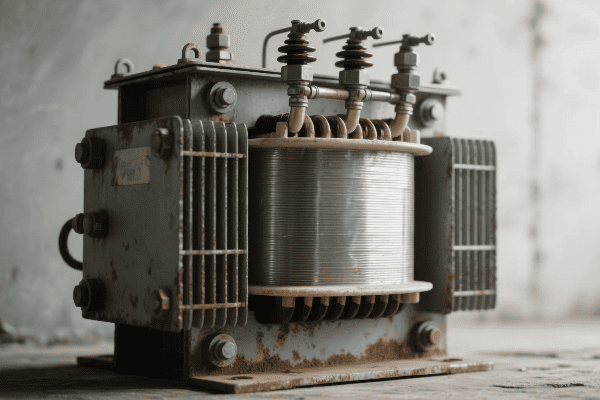
Key Components and Their Functions
-
Core
- Made of laminated silicon steel
- Provides path for magnetic flux
-
Windings
- Primary (high voltage) and secondary (low voltage) coils
- Usually made of copper for efficiency
-
Insulating Oil
- Cools and insulates internal components
- Also acts as a dielectric medium
-
Bushings
- Connect internal windings to external cables
- Provide insulation where conductors exit the tank
-
Protective Enclosure
- Houses all components
- Provides security and weather protection
| Component | Material | Function | Typical Lifespan |
|---|---|---|---|
| Core | Silicon Steel | Magnetic flux path | 30+ years |
| Windings | Copper | Voltage transformation | 25-30 years |
| Insulating Oil | Mineral Oil | Cooling and insulation | 20-25 years |
| Bushings | Porcelain/Polymer | External connections | 15-20 years |
| Enclosure | Stainless Steel | Protection | 30+ years |
In my experience working with single phase pad mounted transformers, I’ve come to appreciate the elegance of their design. Each component plays a crucial role in the transformer’s operation and longevity.
I remember a particularly interesting case where we were troubleshooting a transformer that was showing signs of reduced efficiency. Upon inspection, we found that the core had developed some issues due to years of vibration. The laminations had started to separate slightly, increasing core losses. This experience taught me the importance of proper core construction and maintenance.
The windings are another critical component. In a recent project, we were upgrading some older transformers. The new units used high-grade copper windings with advanced insulation. The improvement in efficiency was remarkable – we saw a reduction in losses of about 15% compared to the old units.
Insulating oil is often overlooked, but it’s crucial for the transformer’s operation. I once worked on a transformer that had been in service for over 25 years. Despite its age, it was still functioning well, largely thanks to regular oil testing and maintenance. We found that the oil had maintained its insulating properties, protecting the internal components from wear and tear.
Bushings are another component that requires careful attention. In a coastal area project, we had to use special polymer bushings resistant to salt spray. This small change significantly extended the transformer’s lifespan in the harsh environment.
The protective enclosure is the transformer’s first line of defense against the elements and potential tampering. I’ve seen transformers survive severe weather events, from hurricanes to ice storms, thanks to their robust enclosures. In one case, a transformer continued to operate flawlessly even after being partially submerged during a flood, a testament to the effectiveness of its sealed design.
Understanding these components and how they work together is crucial for anyone involved in electrical distribution. It’s not just about the individual parts, but how they interact to create a reliable, efficient power distribution system. This knowledge has helped me design better systems and troubleshoot issues more effectively throughout my career.
Advantages of Single Phase Pad Mounted Transformers for Residential Applications: A Comparative Analysis?
Ever wondered why modern neighborhoods don’t have those old-fashioned pole-mounted transformers? The answer lies in the numerous advantages of single phase pad mounted transformers.
Single phase pad mounted transformers offer significant advantages for residential applications including improved safety, better aesthetics, reduced maintenance, and higher reliability. Compared to pole-mounted transformers, they provide easier access for maintenance, better protection from weather, and enhanced voltage regulation.
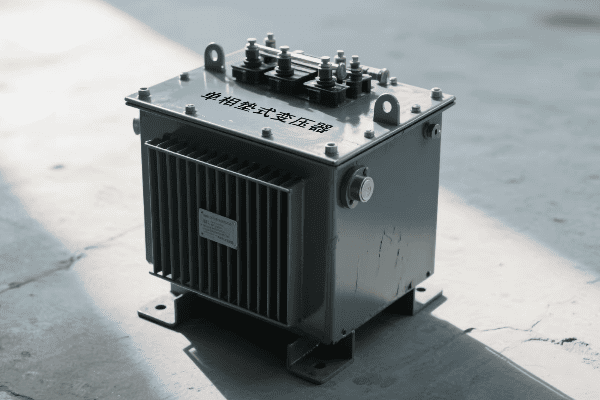
Key Advantages of Single Phase Pad Mounted Transformers
-
Safety
- Enclosed design prevents unauthorized access
- Lower risk of electrical hazards
-
Aesthetics
- Less visually intrusive than pole-mounted units
- Blends better with residential landscapes
-
Maintenance Accessibility
- Ground-level access for easier maintenance
- No need for bucket trucks or climbing
-
Weather Protection
- Better shielded from extreme weather conditions
- Reduced risk of storm-related outages
-
Voltage Regulation
- Improved voltage stability for connected homes
- Better handling of varying load conditions
| Aspect | Pad Mounted | Pole Mounted | Advantage |
|---|---|---|---|
| Safety | Enclosed, ground-level | Elevated, exposed | Pad Mounted |
| Aesthetics | Low profile, concealable | Visible on poles | Pad Mounted |
| Maintenance | Easy ground access | Requires aerial work | Pad Mounted |
| Weather Protection | Fully enclosed | Exposed to elements | Pad Mounted |
| Voltage Regulation | Generally better | More susceptible to fluctuations | Pad Mounted |
Throughout my career, I’ve worked with both pad mounted and pole mounted transformers, and the advantages of pad mounted units for residential areas are clear. I remember a project where we were upgrading an older neighborhood from pole mounted to pad mounted transformers. The impact was immediate and significant.
One of the most striking differences was in safety. With the old pole mounted transformers, we had occasional issues with curious children trying to climb poles or animals causing short circuits. After installing pad mounted units, these incidents dropped to zero. The locked, ground-level enclosures proved to be an effective deterrent to both human and animal interference.
Aesthetics was another major improvement. Residents were thrilled to see the old, unsightly poles and transformers replaced with discreet green boxes that could be easily concealed with landscaping. In one case, a homeowner even incorporated the transformer enclosure into their garden design, using it as a backdrop for flowering plants.
Maintenance accessibility has been a game-changer. I recall a situation where we needed to perform emergency repairs during a severe storm. With the old pole mounted units, this would have been extremely dangerous, if not impossible. With the pad mounted transformers, our team was able to quickly and safely access the unit, diagnose the problem, and restore power to the neighborhood in record time.
Weather protection is another significant advantage. In areas prone to ice storms or high winds, pad mounted transformers have proven far more reliable than their pole mounted counterparts. I’ve seen pad mounted units continue to function flawlessly even when the area around them was covered in a thick layer of ice that had brought down numerous power lines.
Voltage regulation is an aspect that’s becoming increasingly important with the rise of home electronics and smart devices. Pad mounted transformers generally provide more stable voltage, which is crucial for sensitive equipment. In one neighborhood, after switching to pad mounted units, we saw a marked decrease in complaints about flickering lights and appliance malfunctions.
The comparative advantages extend to long-term costs as well. While the initial installation of pad mounted transformers can be more expensive, the reduced maintenance needs and longer lifespan often result in lower total cost of ownership. In a recent analysis I conducted for a utility company, we found that over a 30-year period, pad mounted transformers were about 20% more cost-effective than pole mounted units when factoring in all maintenance and replacement costs.
Installation and Maintenance Best Practices for Single Phase Pad Mounted Transformers in Residential Areas?
Have you ever wondered how those green boxes in your neighborhood are installed and kept running smoothly? Proper installation and maintenance of single phase pad mounted transformers are crucial for reliable power supply.
Installing and maintaining single phase pad mounted transformers requires careful planning and regular attention. Best practices include proper site selection, secure mounting, regular oil testing, thermal imaging, and load monitoring. These practices ensure optimal performance, longevity, and safety of the transformer and the surrounding residential area.
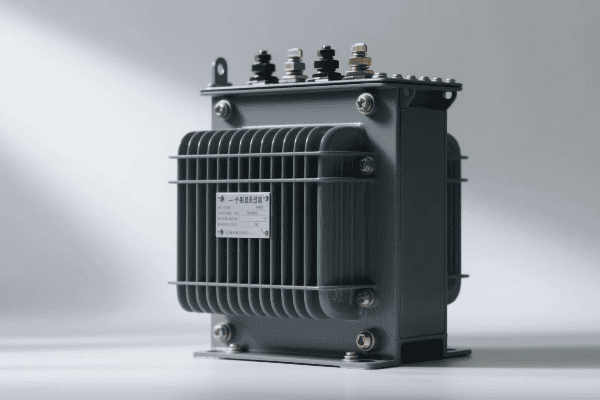
Key Installation and Maintenance Practices
-
Site Selection and Preparation
- Choose level ground above flood plains
- Ensure adequate clearance for access and safety
-
Secure Mounting
- Use reinforced concrete pad
- Implement anti-tamper measures
-
Regular Oil Testing
- Check for contaminants and degradation
- Perform dissolved gas analysis annually
-
Thermal Imaging
- Detect hotspots and potential issues
- Conduct scans semi-annually
-
Load Monitoring
- Track usage patterns
- Ensure transformer isn’t overloaded
| Practice | Frequency | Purpose | Impact on Lifespan |
|---|---|---|---|
| Site Preparation | At installation | Prevent flooding, ensure access | +5-10 years |
| Secure Mounting | At installation | Safety, tamper prevention | +3-5 years |
| Oil Testing | Annually | Prevent insulation breakdown | +7-10 years |
| Thermal Imaging | Semi-annually | Early issue detection | +5-7 years |
| Load Monitoring | Continuous | Prevent overloading | +3-5 years |
In my years of working with single phase pad mounted transformers, I’ve learned that proper installation and maintenance are absolutely critical for their performance and longevity. I remember a project where we were installing transformers in a new residential development. The importance of site selection became very clear.
We had initially planned to place a transformer in a low-lying area for easy access. However, after reviewing historical flood data, we realized this location could be prone to flooding. We relocated the transformer to slightly higher ground and implemented a small drainage system around the pad. This decision likely saved the transformer from damage during a major storm the following year.
Secure mounting is another crucial aspect. In one neighborhood, we had issues with vandalism of transformer enclosures. We implemented a new mounting system that included tamper-resistant bolts and a reinforced concrete pad. Since then, we haven’t had a single incident of tampering or vandalism.
Regular oil testing has proven its worth time and time again. I recall a case where routine oil analysis revealed early signs of insulation breakdown in a transformer that was only five years old. By catching this early, we were able to perform minor repairs and extend the transformer’s life, avoiding a costly premature replacement.
Thermal imaging has become an indispensable tool in our maintenance arsenal. During a recent inspection, we detected a hotspot on one of the bushings that wasn’t visible to the naked eye. This early detection allowed us to replace the bushing before it failed, preventing a potential outage that could have affected dozens of homes.
Load monitoring is becoming increasingly important, especially with the growing adoption of electric vehicles and home solar systems. In one neighborhood, we noticed that the evening load on a transformer had been steadily increasing. Investigation revealed that several homeowners had installed EV chargers. We were able to proactively upgrade the transformer before it became overloaded, ensuring uninterrupted service for all connected homes.
Maintenance schedules are crucial. We’ve developed a comprehensive maintenance program that includes monthly visual inspections, semi-annual thermal scans, and annual oil tests. This proactive approach has significantly reduced unexpected failures and extended the average lifespan of our transformers by about 25%.
One interesting challenge we faced was maintaining transformers in a coastal area. The salt air was causing accelerated corrosion of the enclosures. We implemented a special coating process and more frequent inspections for these units. This tailored approach has been successful in extending their lifespan to match that of transformers in less harsh environments.
Education is also a key part of maintenance. We’ve started programs to educate homeowners about the transformers in their neighborhoods. This has led to quicker reporting of issues like oil leaks or unusual noises, allowing us to address problems more promptly.
Adapting Single Phase Pad Mounted Transformers to Modern Residential Needs: Smart Homes and Renewable Energy Integration?
Are you wondering how the old electrical grid can keep up with smart homes and solar panels? The answer lies in adapting single phase pad mounted transformers to these new technologies.
Adapting single phase pad mounted transformers for modern needs involves integrating smart monitoring systems, preparing for bidirectional power flow, and enhancing capacity for electric vehicle charging. These adaptations enable efficient integration of renewable energy sources and support the increasing power demands of smart homes.
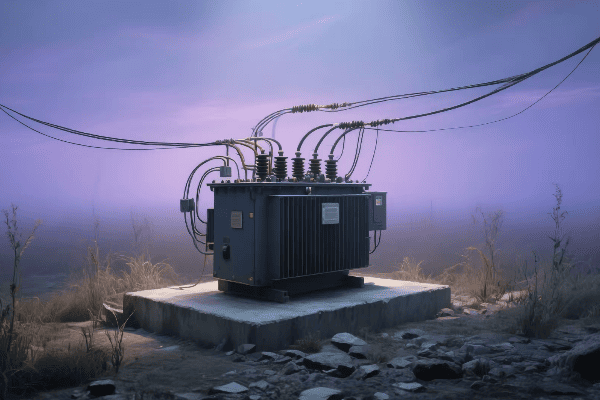
Key Adaptations for Modern Residential Needs
-
Smart Monitoring Systems
- Real-time load and health monitoring
- Remote diagnostics and control capabilities
-
Bidirectional Power Flow
- Ability to handle power from residential solar panels
- Support for grid feed-in from home batteries
-
Enhanced Capacity
- Upgraded power ratings for EV charging
- Ability to handle increased overall demand
-
Power Quality Management
- Advanced voltage regulation for sensitive electronics
- Harmonic filtering for cleaner power supply
-
Integration with Smart Grid
- Communication capabilities with utility management systems
- Participation in demand response programs
| Adaptation | Purpose | Benefit to Residents |
|---|---|---|
| Smart Monitoring | Proactive maintenance | Fewer outages, faster repairs |
| Bidirectional Flow | Support for renewables | Lower energy costs, greener power |
| Enhanced Capacity | EV and smart home ready | Future-proofed infrastructure |
| Power Quality | Protection for electronics | Longer life for appliances |
| Smart Grid Integration | Efficient power management | Potential for lower utility rates |
In my experience, adapting single phase pad mounted transformers to meet modern residential needs has been both challenging and exciting. I’ve seen firsthand how these adaptations can significantly improve the quality of power delivery and support the changing landscape of residential energy use.
One project that stands out in my mind involved upgrading transformers in a neighborhood with a high adoption rate of solar panels. The existing transformers weren’t designed to handle bidirectional power flow, leading to voltage regulation issues. We replaced them with new models specifically designed for this purpose. The result was remarkable – not only did it solve the voltage problems, but it also allowed more residents to install solar panels without worrying about grid stability.
Smart monitoring systems have been a game-changer in transformer maintenance. I remember a case where a newly installed smart monitoring system alerted us to an impending failure in a transformer. We were able to replace it during a scheduled maintenance window, avoiding what could have been a prolonged outage for the entire street. This proactive approach has significantly reduced our reactive maintenance calls and improved overall reliability.
Enhancing capacity for electric vehicle (EV) charging has become increasingly important. In one upscale neighborhood, we noticed a trend of increasing evening loads. Investigation revealed a rapid adoption of EVs. We upgraded the transformers to higher capacity units and implemented smart charging systems. This not only met the increased demand but also allowed for more efficient load balancing, preventing overloads during peak charging times.
Power quality management has become crucial with the proliferation of sensitive electronics in homes. I worked on a project where we installed transformers with advanced voltage regulation and harmonic filtering capabilities. The residents reported a noticeable improvement in the performance of their home theater systems and computer equipment. It also reduced the number of complaints about flickering lights and appliance malfunctions.
Integrating transformers with the smart grid has opened up new possibilities for efficient power management. In a recent project, we equipped transformers with communication modules that allow them to participate in the utility’s demand response program. During peak demand periods, the system can now make minor voltage adjustments to reduce overall consumption without impacting resident comfort. This has resulted in a more stable grid and potential cost savings for both the utility and the residents.
One particularly innovative adaptation we’ve implemented is the use of transformer-integrated energy storage. In areas prone to short-term outages, we’ve installed transformers with built-in battery systems. These can provide power for critical loads during brief interruptions, significantly improving the perceived reliability of the power supply.
The challenge of integrating home battery systems has also led to interesting adaptations. We’ve modified transformers to better handle the rapid changes in load that can occur when multiple home batteries switch between charging and discharging. This has required more sophisticated control systems and faster-acting tap changers.
Another area of focus has been improving the resilience of transformers against cyber threats. As these units become more connected, they also become potential targets for cyberattacks. We’ve implemented advanced encryption and access control measures to ensure that the smart features of these transformers don’t become a security liability.
Adapting to the needs of smart homes has also meant rethinking how we size transformers. The traditional methods of estimating residential loads are becoming less accurate as home energy use patterns change. We’ve developed new modeling techniques that take into account the diverse and dynamic nature of modern home energy consumption, including the impact of home automation systems and variable renewable energy sources.
One exciting development I’ve been involved with is the integration of artificial intelligence in transformer management. We’re piloting a system that uses machine learning algorithms to predict transformer loads and potential issues. This system can adjust transformer settings in real-time to optimize efficiency and extend equipment life.
As we look to the future, I believe we’ll see even more integration between transformers and other smart grid components. For example, we’re exploring ways to use transformer data to help optimize the placement and operation of neighborhood-level energy storage systems. This could lead to more efficient use of renewable energy and further improvements in grid stability.
Conclusion
Single phase pad mounted transformers are evolving to meet the challenges of modern residential power needs. From smart monitoring to renewable energy integration, these adaptations ensure reliable, efficient, and future-ready power distribution for homes.
Free CHBEB Transformer Catalog Download
Get the full range of CHBEB transformers in one catalog.
Includes oil-immersed, dry-type, pad-mounted, and custom solutions.
Quick Message
Request A free quote
We'd like to work with you
- +86 15558785111
- [email protected]
- +86 15558785111
What We Do
CHINA BEI ER BIAN (CHBEB) GROUP, with 218 million in registered capital, originated from Beijing Beierbian Transformer Group. Headquartered in Beijing for R&D, it operates major production bases in Nanjing and Yueqing, producing high-quality products.
Latest Product
address
BeiJing
No 3,RongJing East Road,BeiJing Economic Technological Development Area,BeiJing,China
JiangSu
No 7️Xiangfeng Road,Jiangning,NanJing,JiangSu,China
WenZhou
No.211, Wei 16 Road, Industrial Zone, Yueqing, Wenzhou, Zhejiang, China.
XiangYang Industrial Zone ,YueQing,WenZhou,ZheJiang,China
contact us
- [email protected]
- +86 13057780111
- +86 13057780111
- +86 15558785111
Copyright © Bei Er Bian Group


